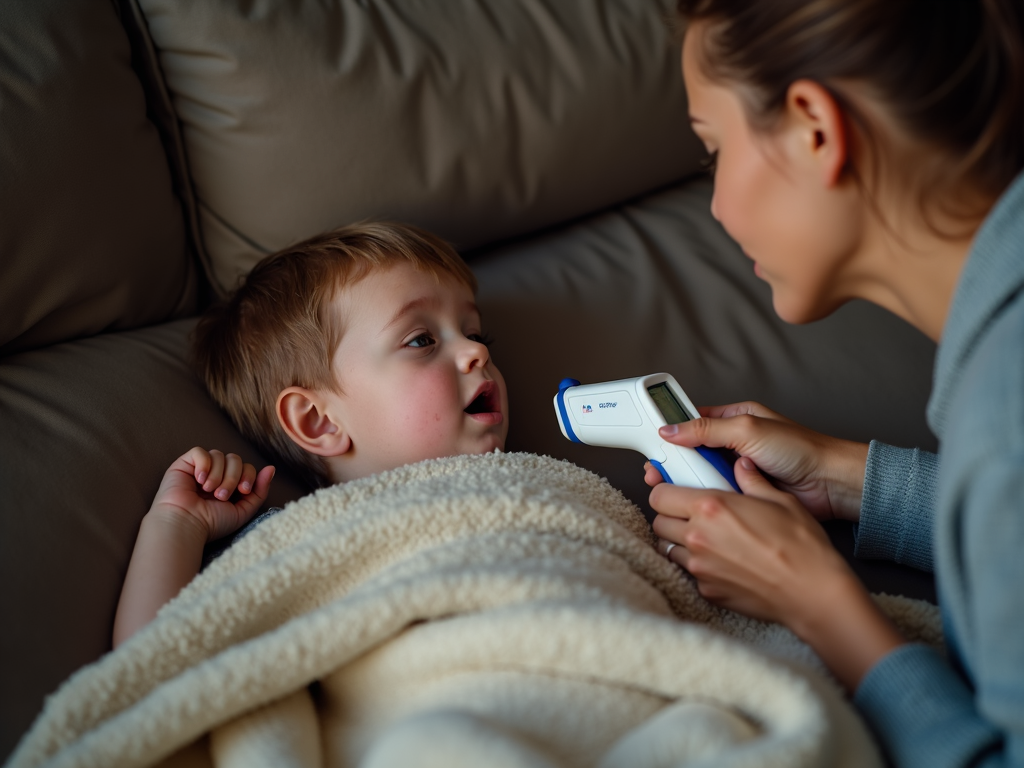Acute FPIES is a serious food allergy that can affect infants and young children. Recognizing the symptoms early can help you get your child the care they need quickly.
What is FPIES?
FPIES, or Food Protein-Induced Enterocolitis Syndrome, is a type of food allergy that affects the gastrointestinal system. Unlike other food allergies, FPIES reactions are delayed and can take hours to appear after eating the trigger food.
Imagine your little one has just started eating solid foods. You're excited to introduce new flavors and textures, but then, a few hours after eating, they start vomiting uncontrollably. You might think it's just a stomach bug, but it could be something more serious, like FPIES.

Acute FPIES: What to Look For
Acute FPIES is when the symptoms come on suddenly and severely after eating a trigger food. The most common symptoms include profuse vomiting, diarrhea, lethargy, and pale skin. In some cases, it can lead to dehydration and shock, which is why it's important to recognize these symptoms early.
For example, Sarah noticed that every time she gave her son, Jake, rice cereal, he would start vomiting a few hours later. At first, she thought it was a coincidence, but after the third time, she realized something was wrong. She took Jake to the doctor, who diagnosed him with FPIES.
Symptoms of Acute FPIES
The symptoms of acute FPIES can vary, but the most common ones are: - Profuse vomiting, often starting 1-4 hours after eating the trigger food - Diarrhea, which may contain blood or mucus - Lethargy or extreme tiredness - Pale or blue-tinged skin - Low blood pressure - Dehydration

How to Recognize FPIES Symptoms
If your child has eaten a new food and starts showing these symptoms, especially if it's happened more than once with the same food, it could be FPIES. Keep a food diary to track what your child eats and any reactions they have. This can help you and your doctor identify the trigger foods.
Because the symptoms of FPIES can look like other illnesses, it's important to tell your doctor about any patterns you've noticed with certain foods.
What to Do If You Suspect FPIES
If you think your child might have FPIES, contact your pediatrician right away. They may refer you to an allergist for testing. In the meantime, avoid giving your child the suspected trigger food.
Managing FPIES involves avoiding the trigger foods and being prepared for accidental exposures. Work with your doctor to create an emergency plan, which may include carrying oral rehydration solutions or knowing when to go to the emergency room.
Common Trigger Foods
Some foods are more likely to cause FPIES than others. These include: - Rice - Oats - Cow's milk - Soy - Poultry - Fish - Eggs - Some fruits and vegetables, like sweet potatoes and peas However, any food can potentially be a trigger, so it's important to be cautious when introducing new foods.
Diagnosing FPIES
Diagnosing FPIES can be tricky because there are no specific tests for it. Your doctor will likely ask about your child's symptoms, their diet, and any patterns you've noticed. They may also perform a physical exam and rule out other conditions. In some cases, an oral food challenge may be done under medical supervision to confirm the diagnosis.
Treatment and Management
The main treatment for FPIES is to avoid the trigger foods. Your doctor may also recommend carrying oral rehydration solutions in case of an episode. If your child has a severe reaction, they may need to be hospitalized for IV fluids and monitoring.
Emotional Impact on Parents
Dealing with FPIES can be stressful for parents. It's hard to see your child sick, and the fear of accidental exposure can be overwhelming. It's important to seek support from family, friends, or support groups for parents of children with food allergies.
As one mother shared, 'When my daughter was diagnosed with FPIES, I felt so alone and scared. But connecting with other parents who understood what I was going through made a huge difference.'
Outlook for Children with FPIES
The good news is that many children outgrow FPIES by the time they're 3-5 years old. Your doctor can help you determine when it's safe to reintroduce trigger foods.
Prevention Tips
While there's no sure way to prevent FPIES, some steps can help reduce the risk. These include: - Breastfeeding, if possible, as it may help protect against food allergies - Introducing solid foods one at a time, waiting a few days between new foods - Avoiding common trigger foods until your child is older - Consulting with your pediatrician before introducing new foods
The Importance of Education
Educating yourself and your family about FPIES is key. Make sure everyone who cares for your child knows about their condition and what to do in case of a reaction.
Staying Informed
Research on FPIES is ongoing, and new treatments may become available in the future. Stay informed by following reputable sources and talking to your doctor.

Summary
Recognizing the symptoms of acute FPIES is crucial for parents of infants and young children. By understanding what to look for and knowing when to seek medical help, you can ensure your child gets the care they need. Remember to keep a food diary, avoid trigger foods, and work closely with your healthcare provider.
Discuss Here